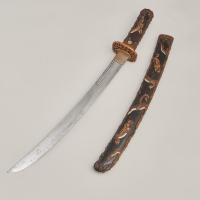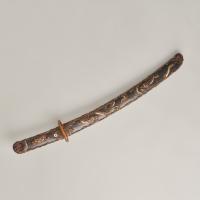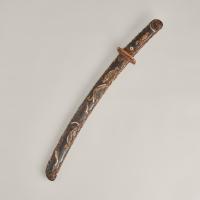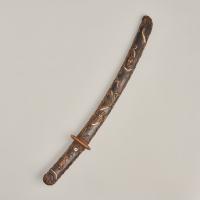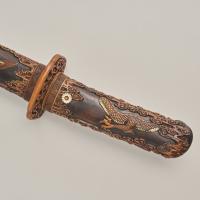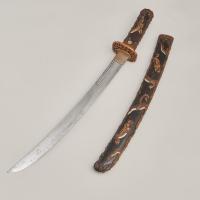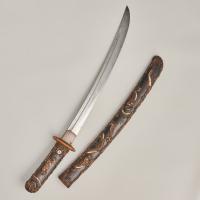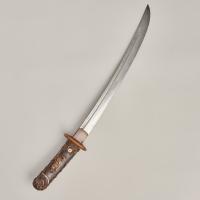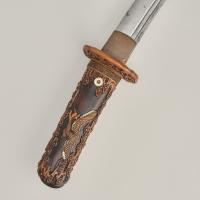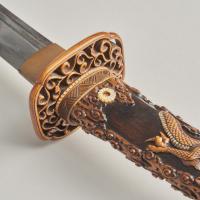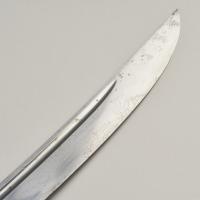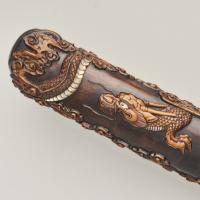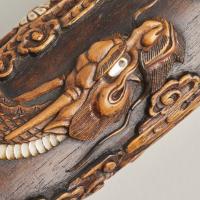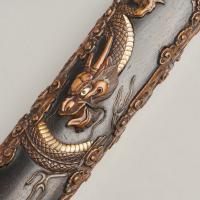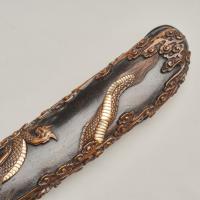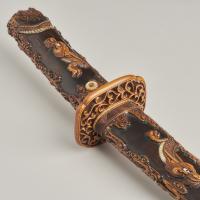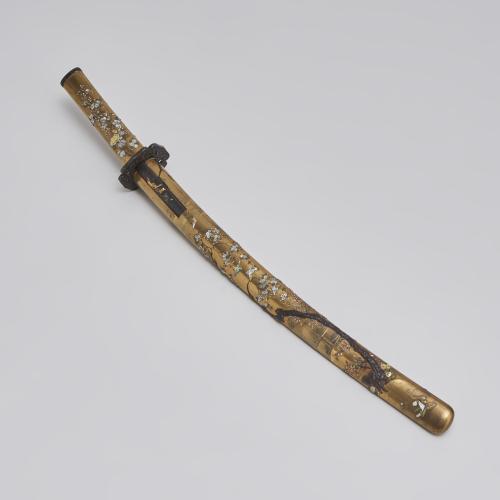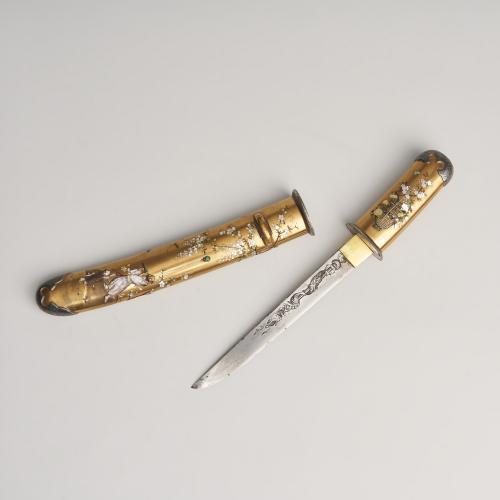
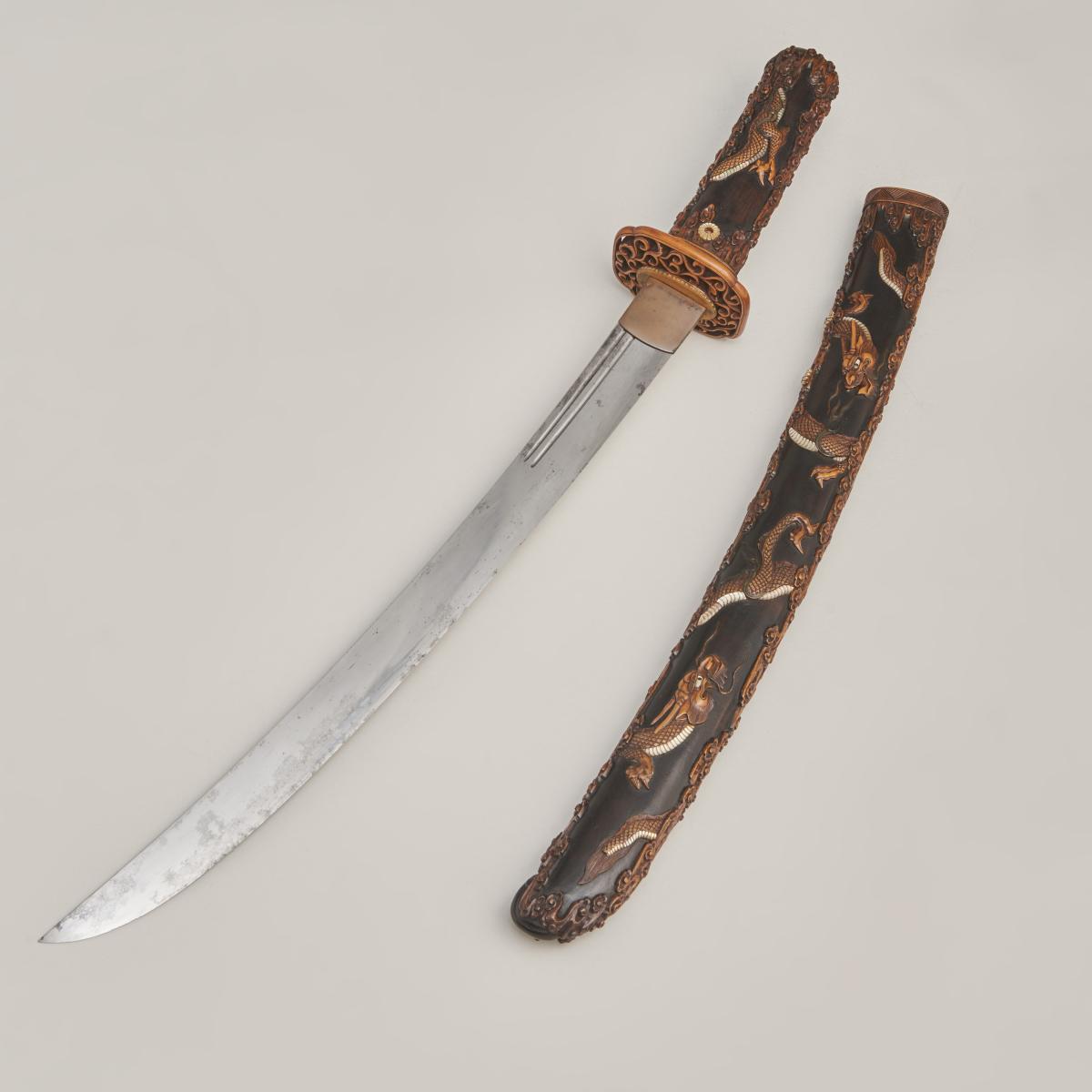
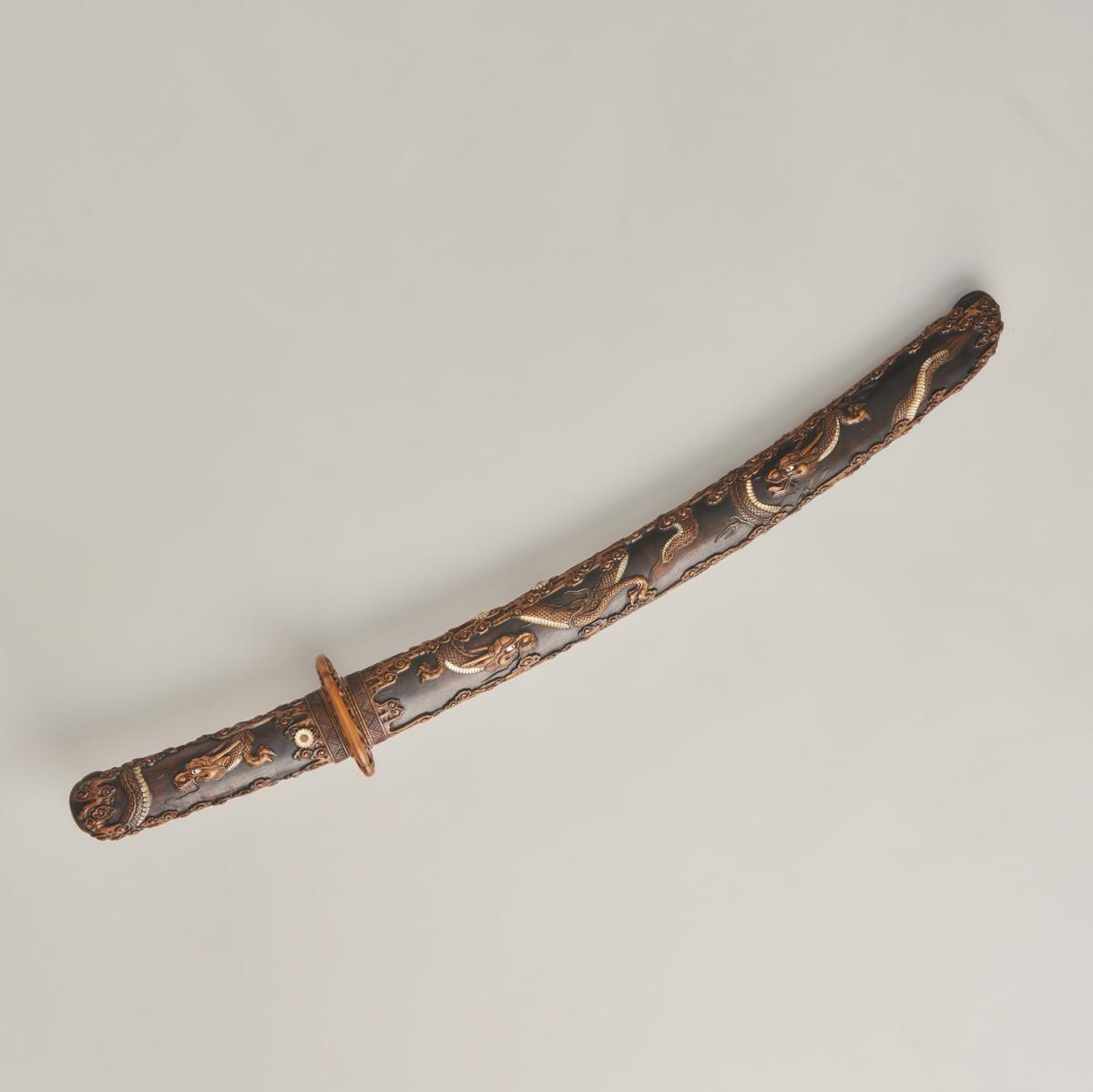
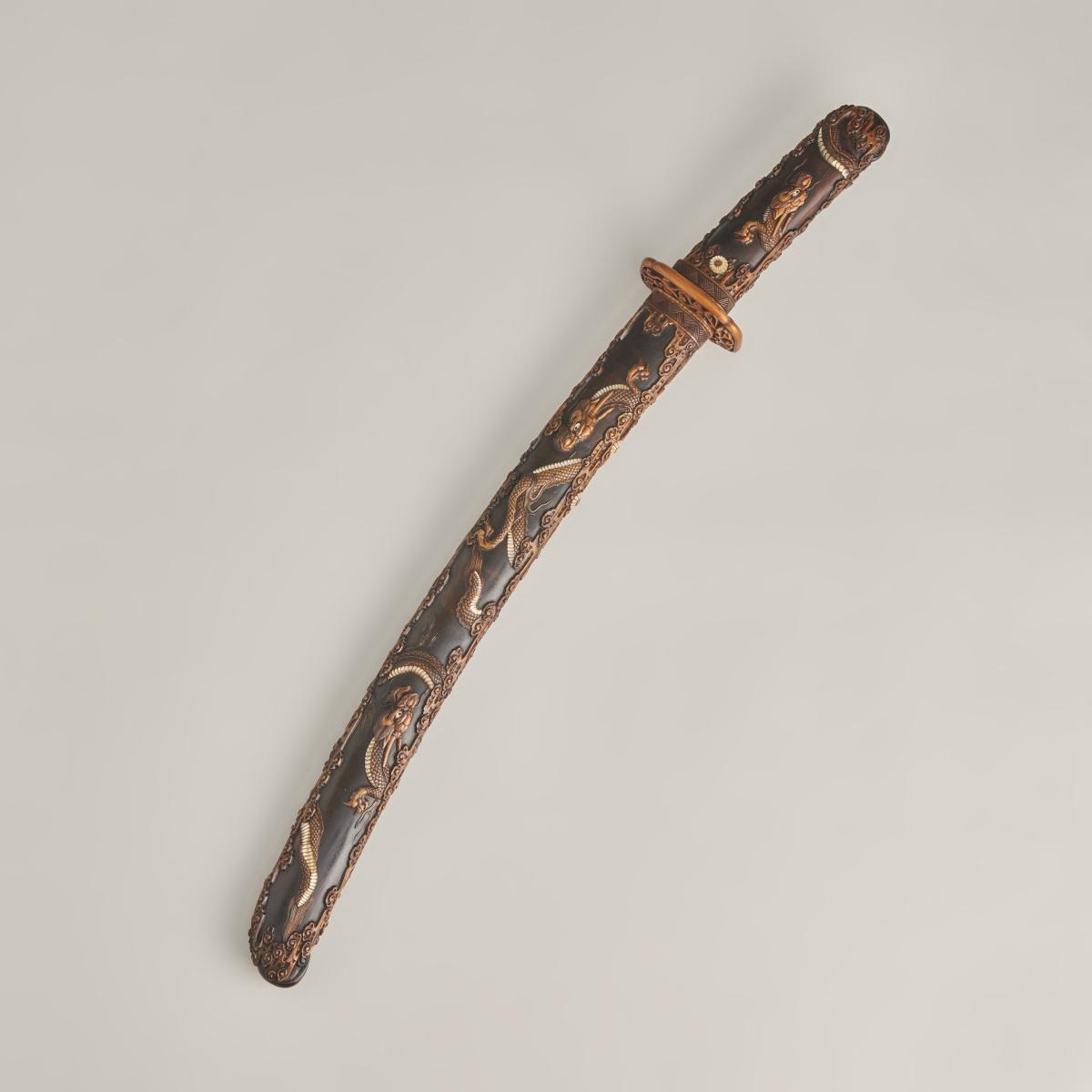
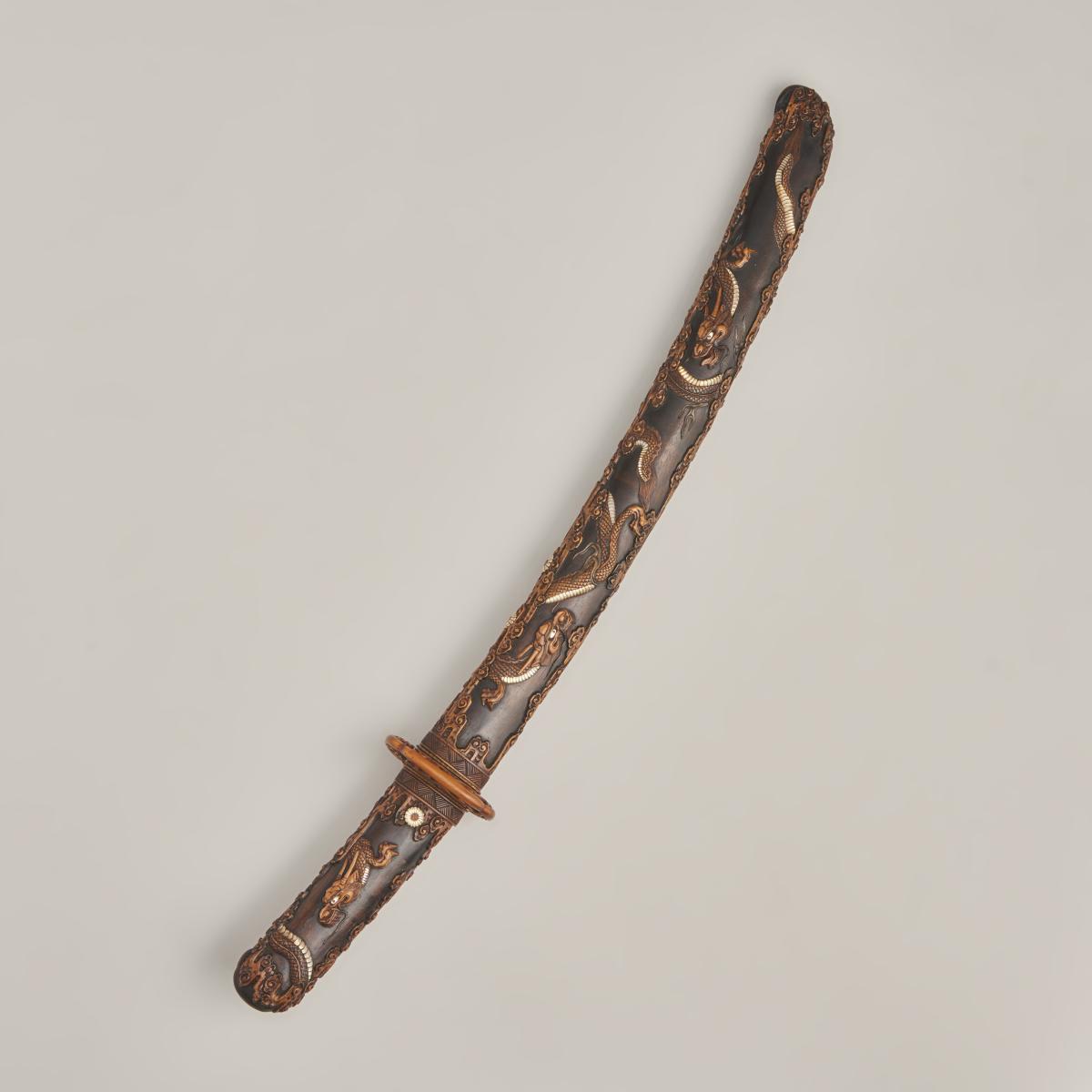
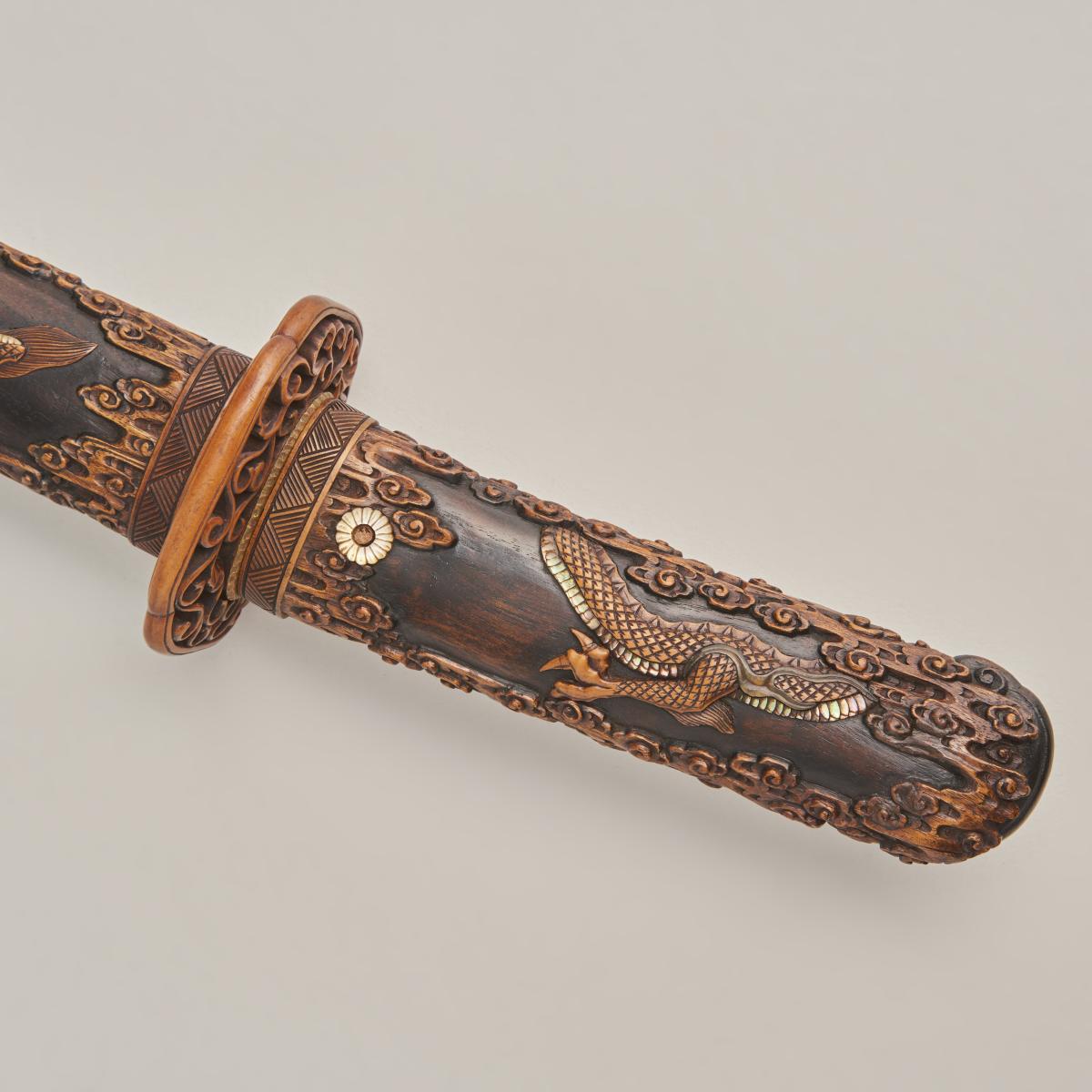
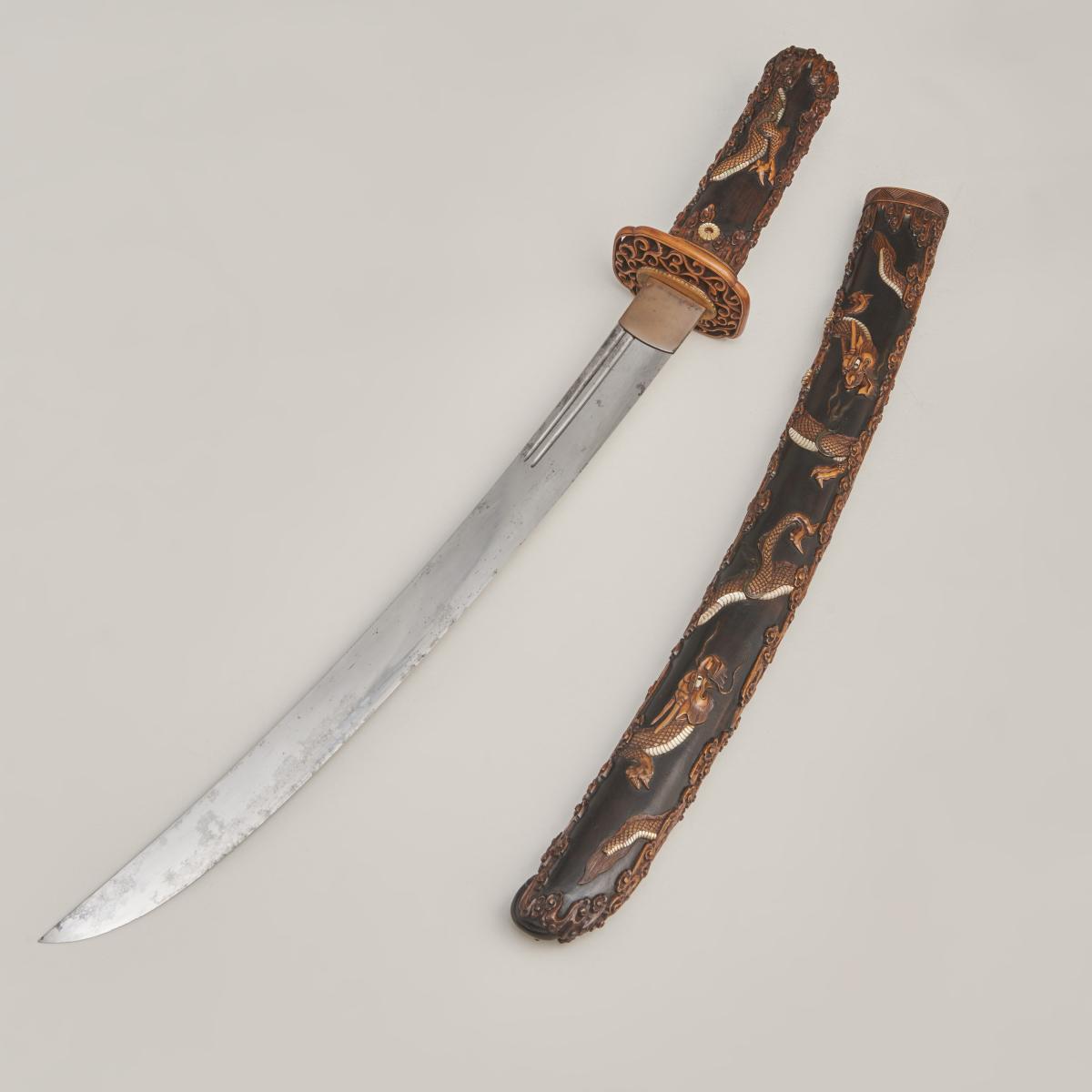
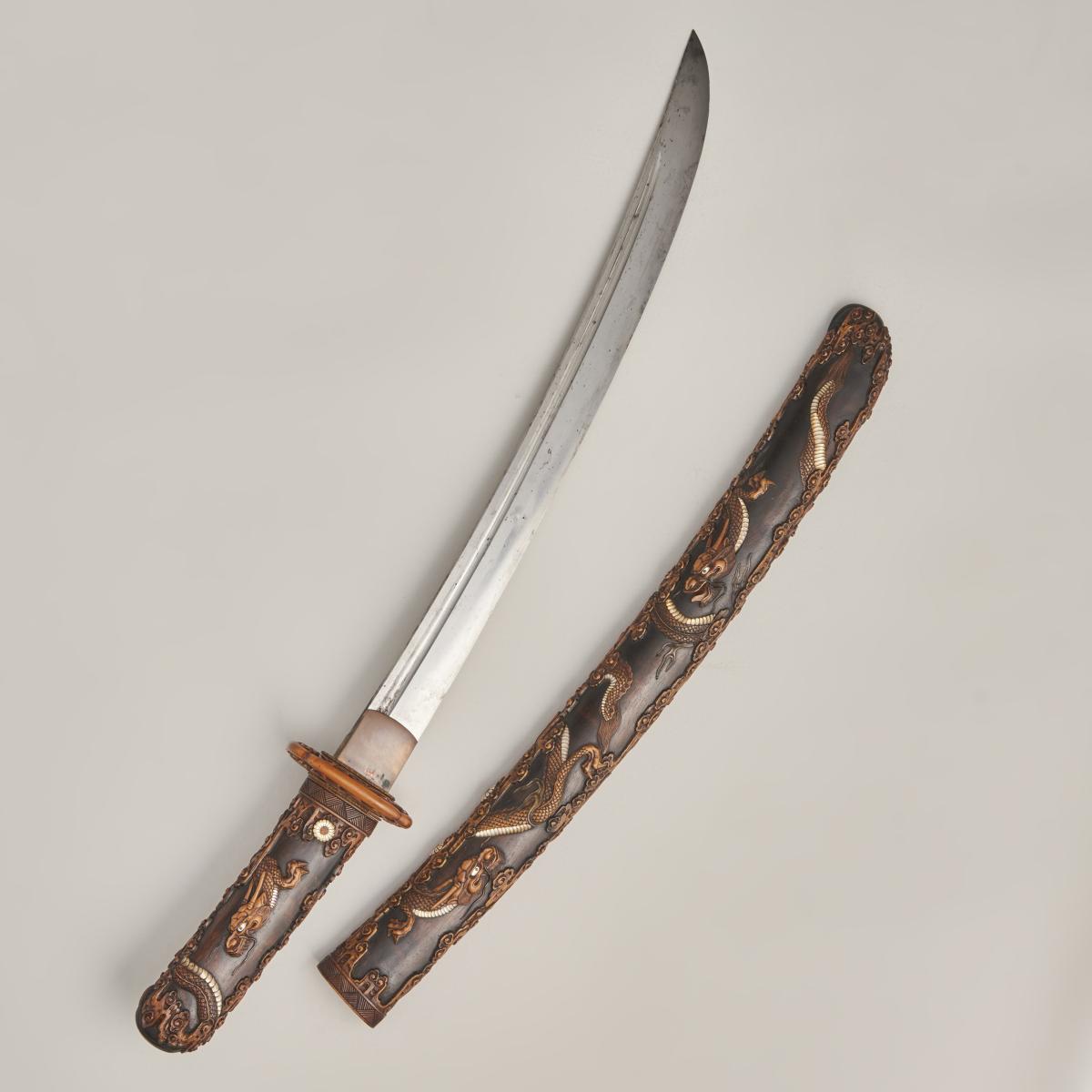
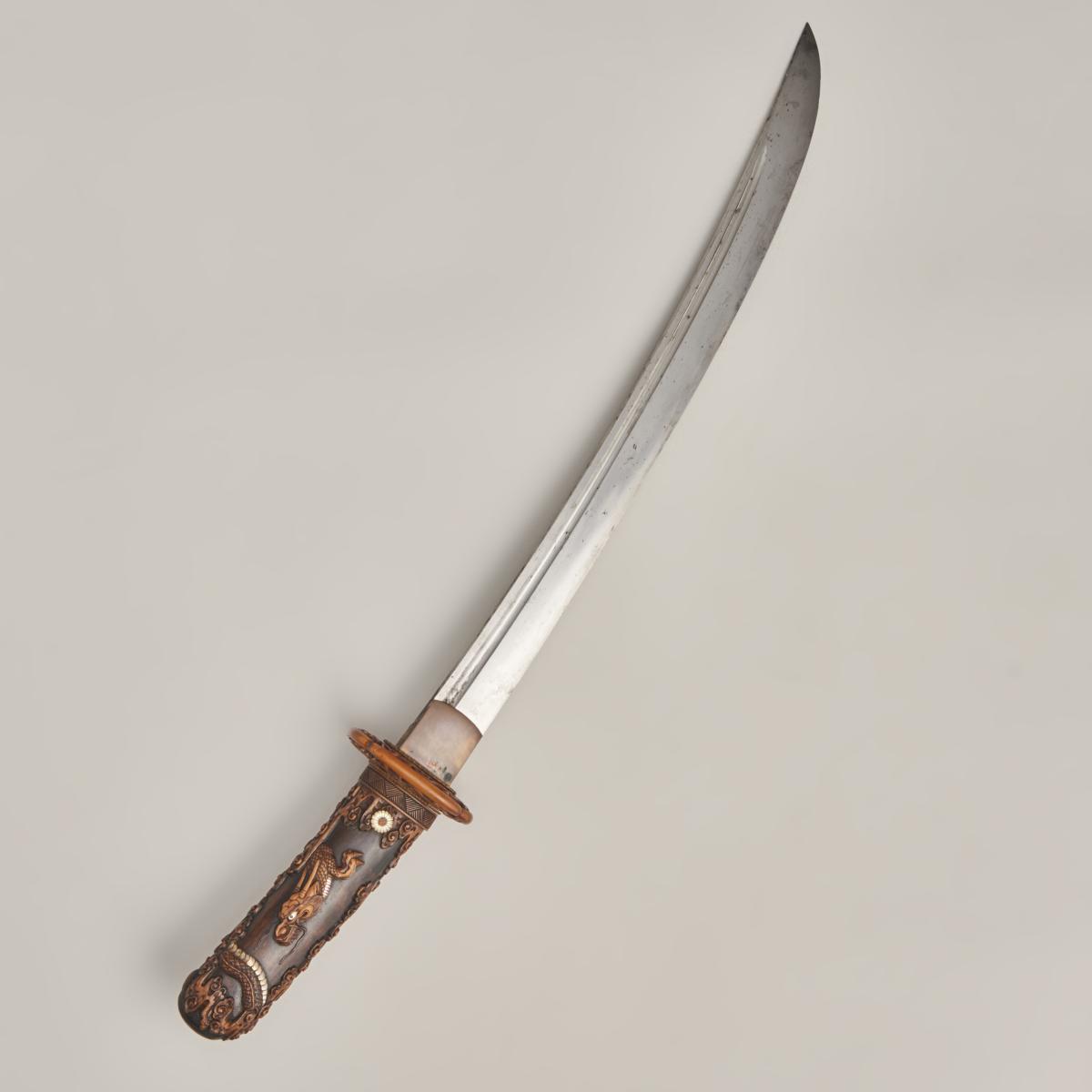
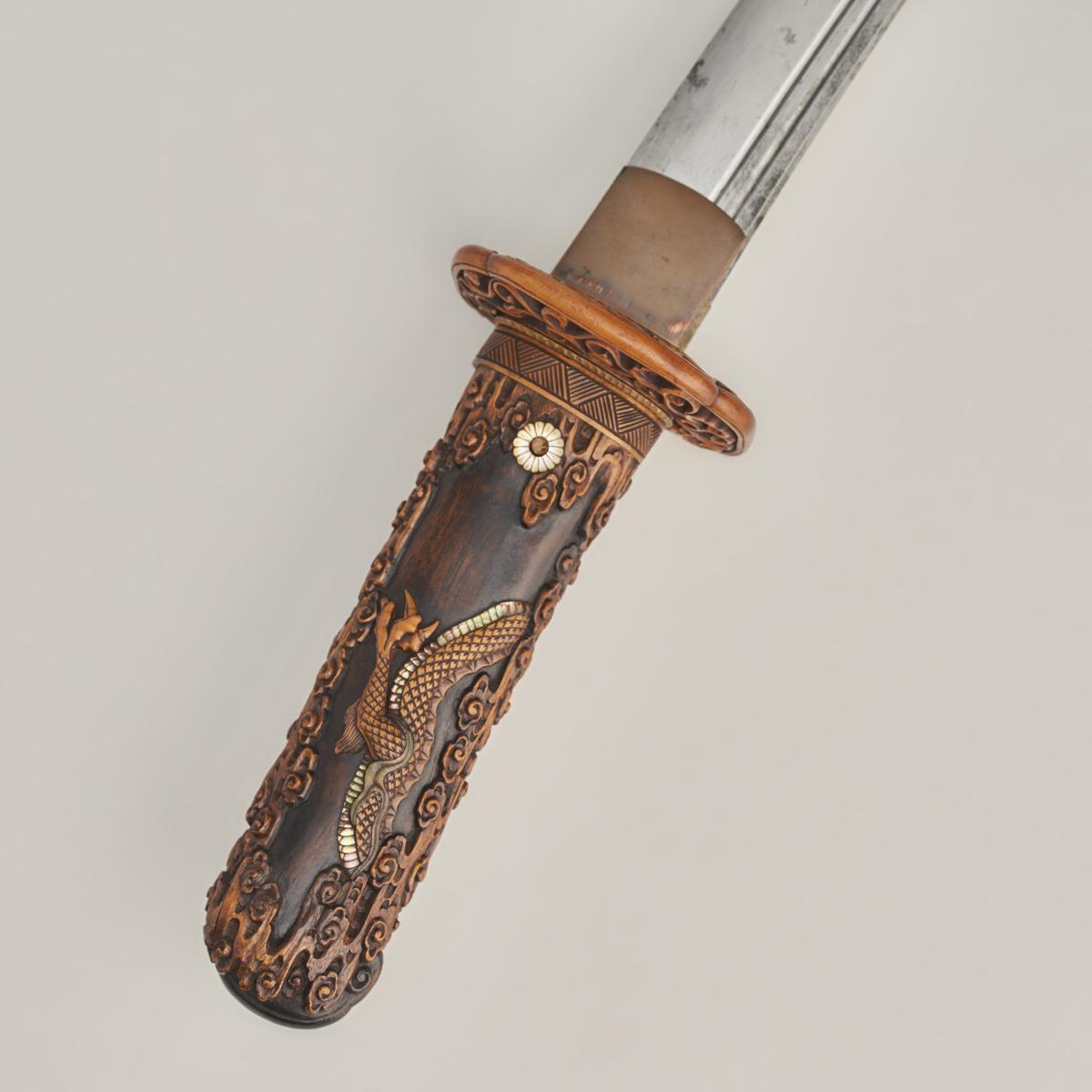
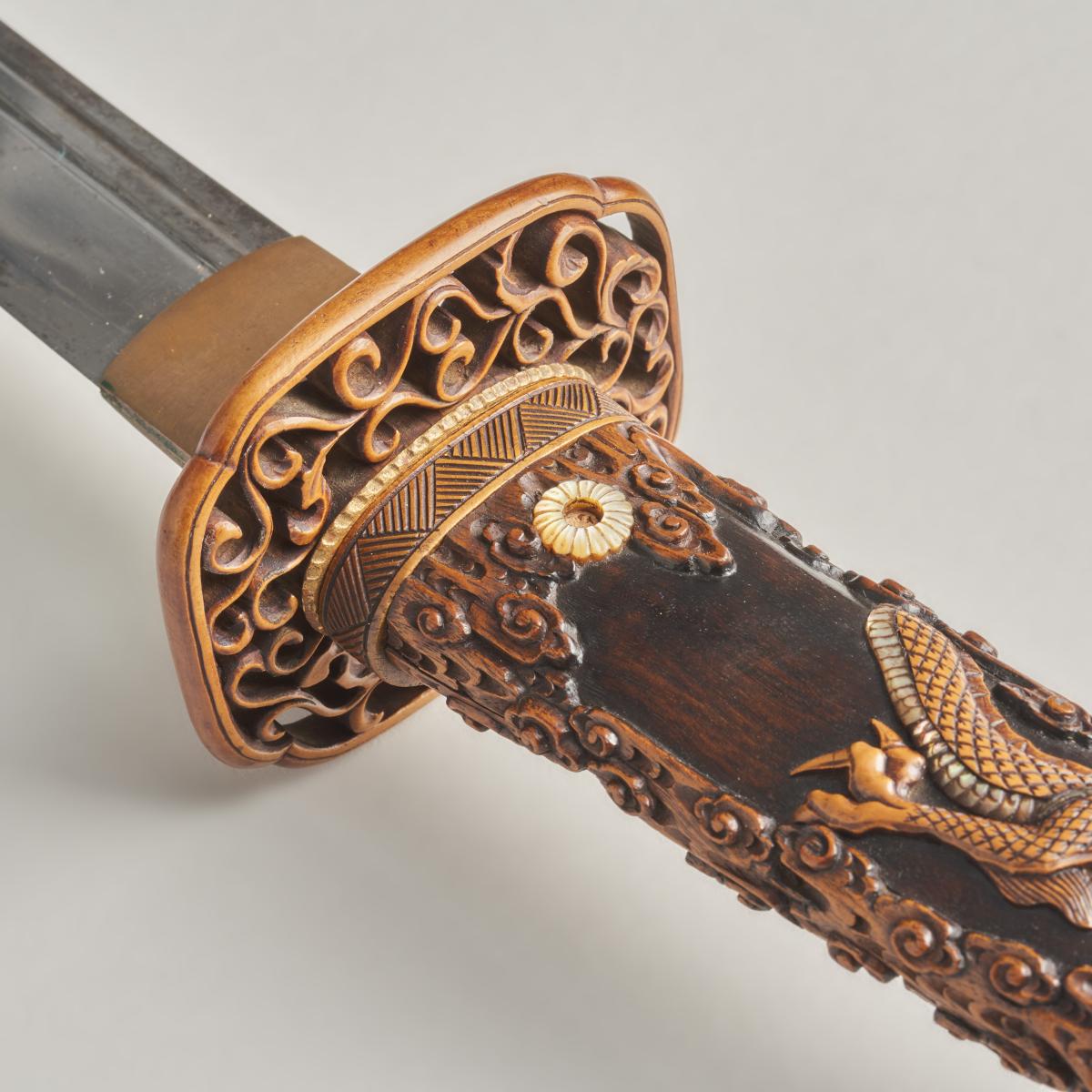
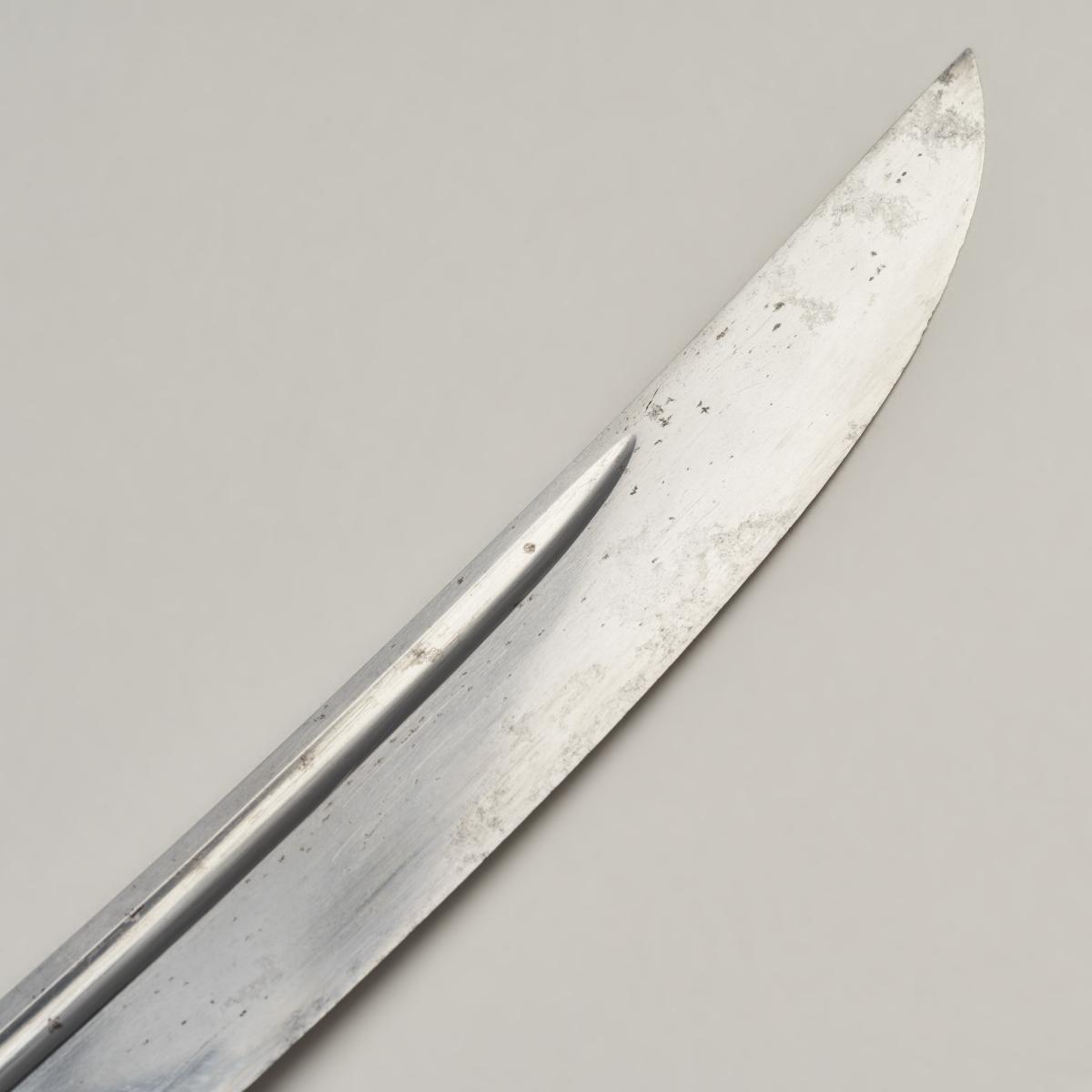
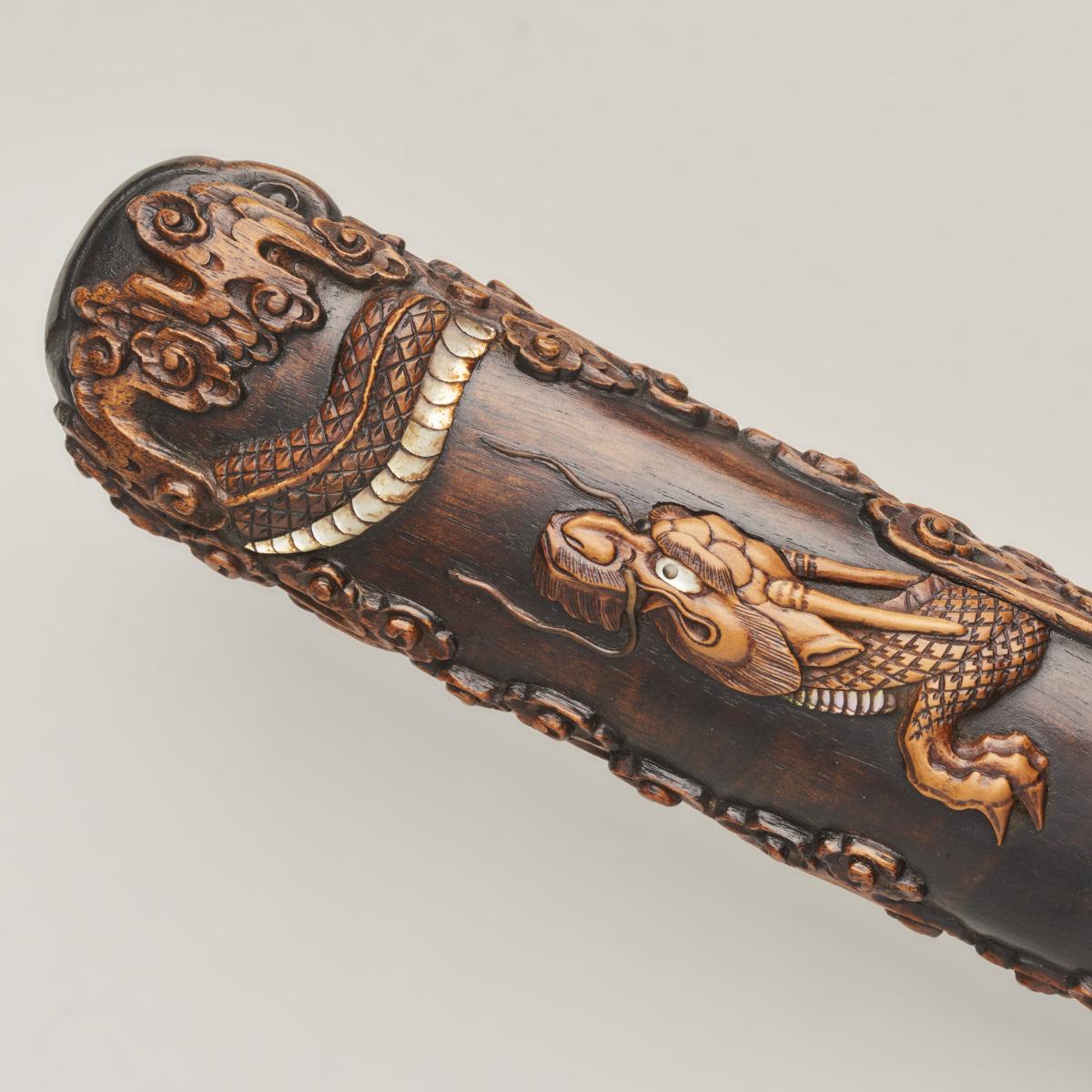
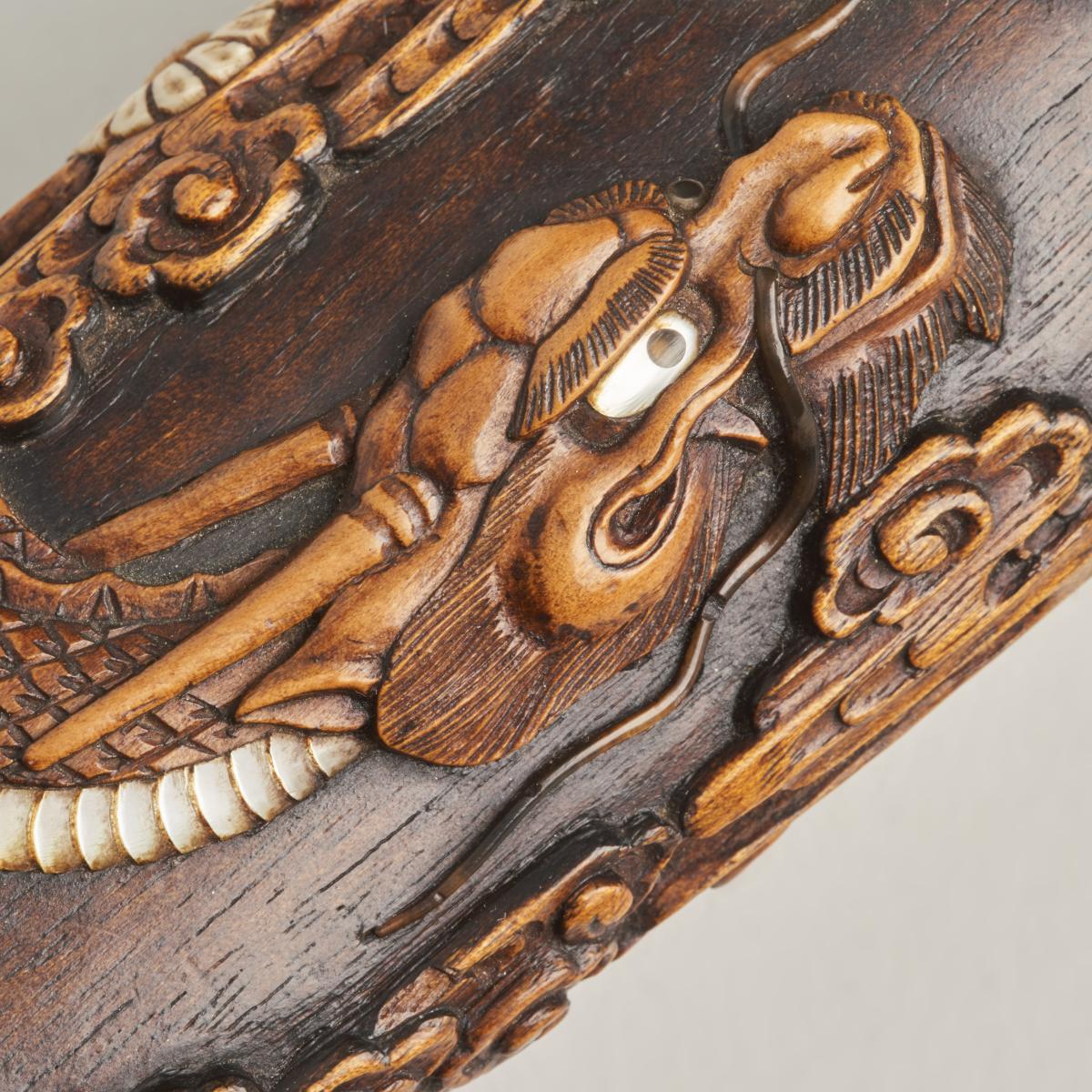
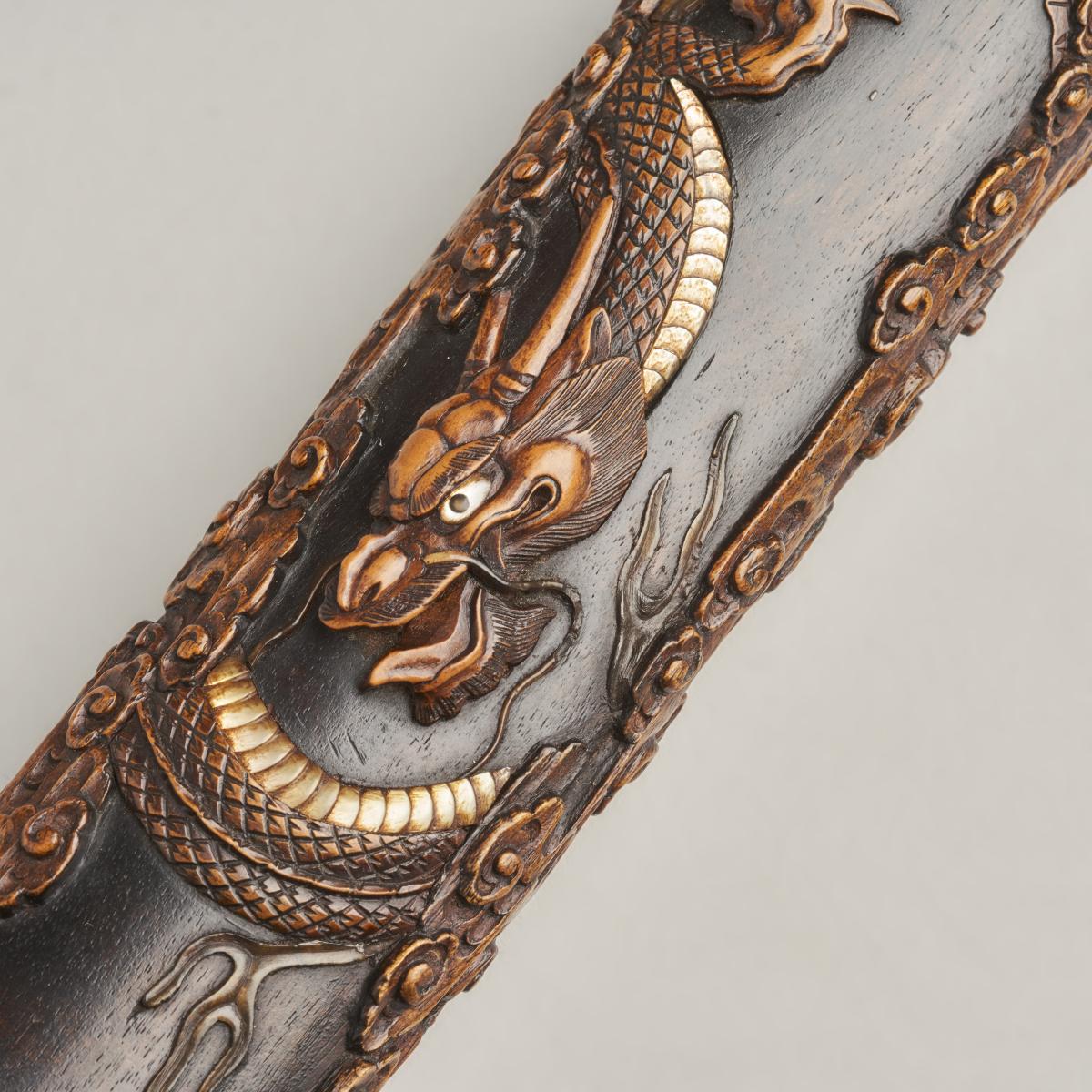
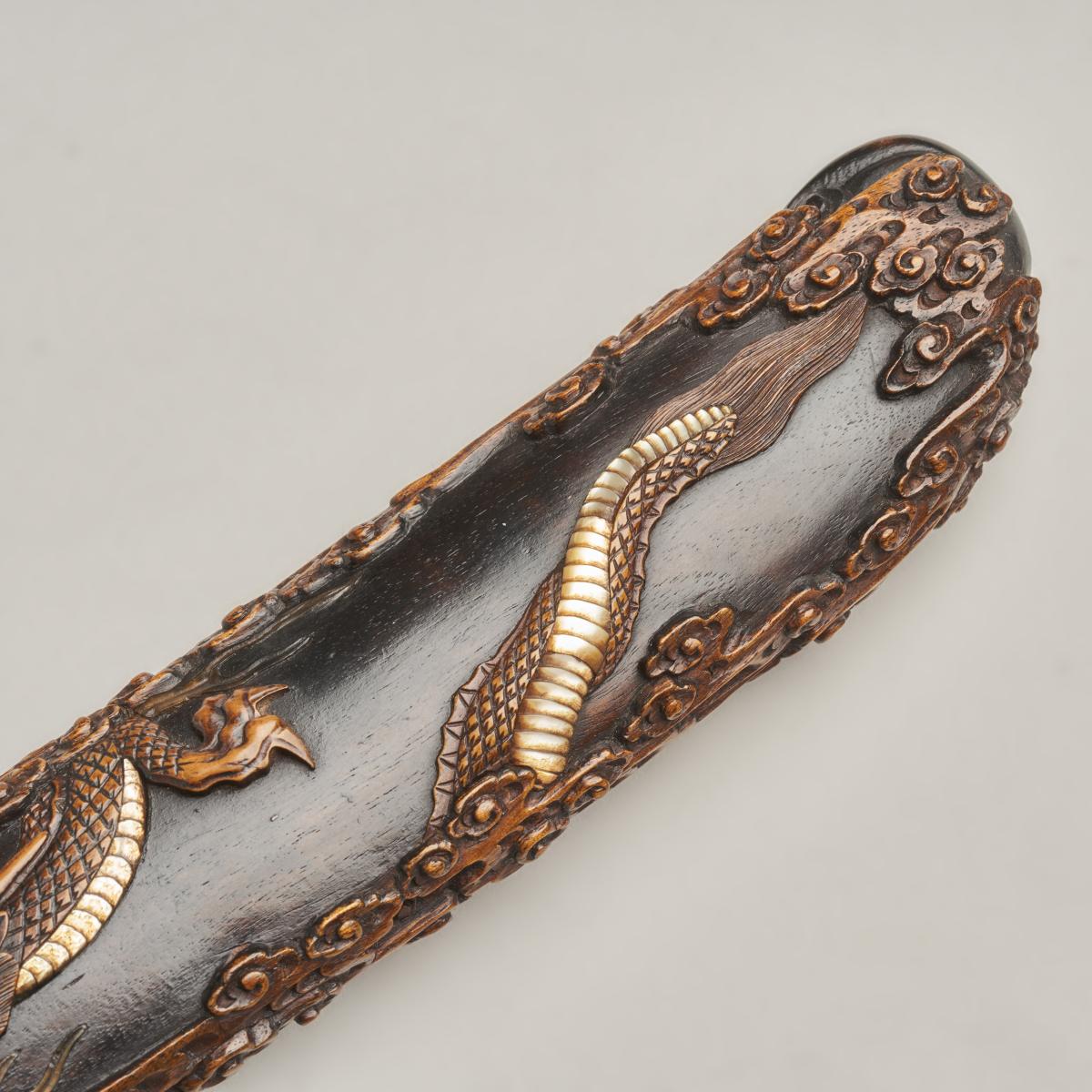
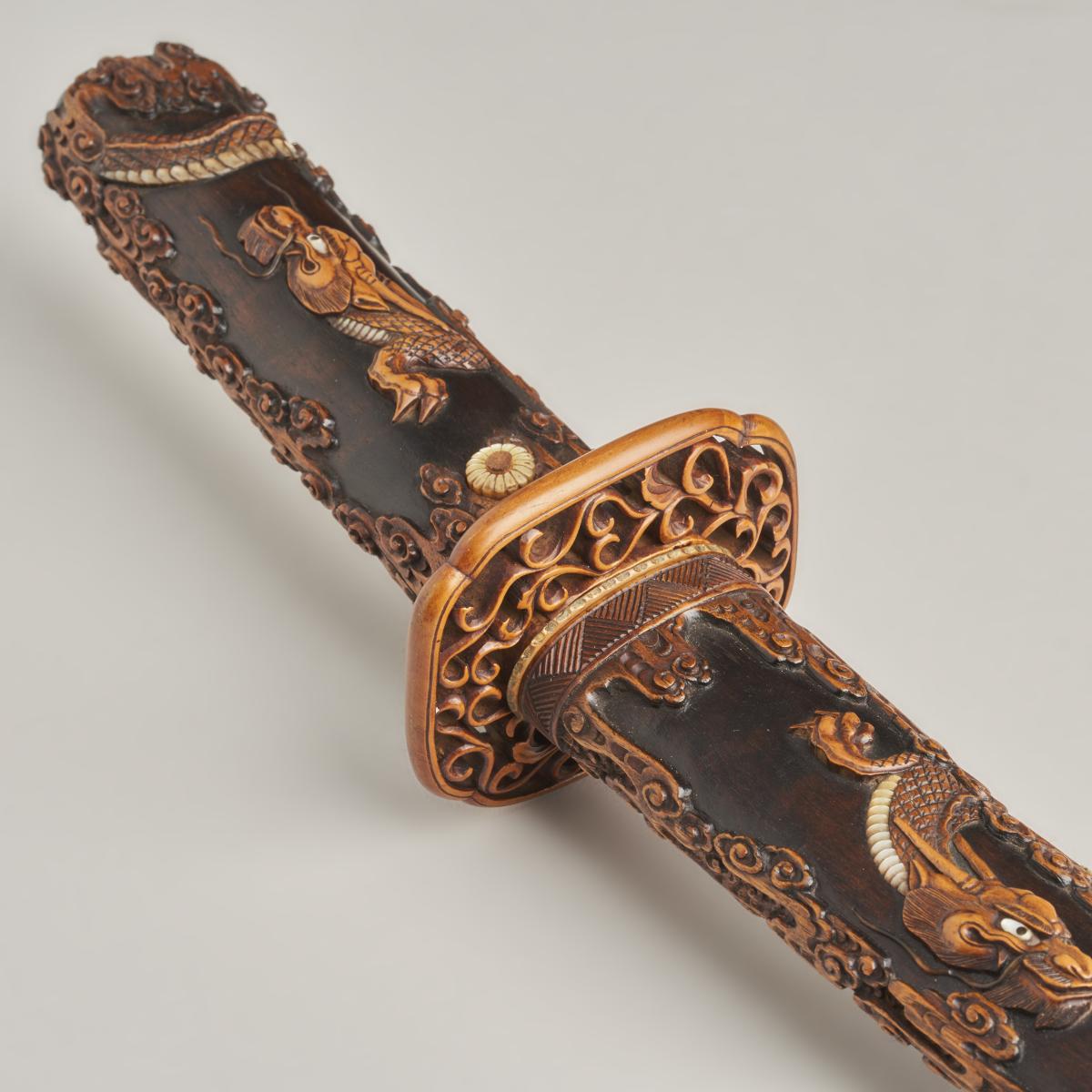
Price on application
This object is eligible for a Certificate of BADA Provenance
The BADA Standard
- Since 1918, BADA has been the leading association for the antiques and fine art trade
- Members are elected for their knowledge, integrity and quality of stock
- Our clients are protected by BADA’s code of conduct
- Our dealers’ membership is reviewed and renewed annually
- Bada.org is a non-profit site: clients deal directly with members and they pay no hidden fees
A fine Japanese Wakizashi Samurai sword with wood scabbard, (Japanese Circa 1880).
From our collection of Meiji-era metalwork and armoury this exceptional Wakizashi, complete with carved wood scabbard and Tanto.
The scabbard and hilt decorated with multiple Dragons flying through clouds and decorated with inlaid Mother of Pearl.
Condition is very good. Contact us for additional information and to arrange a viewing.
Wakizashi
A wakizashi is a sword that was commonly used by Samurai. Generally they are between 30-60cm long (between 1-2 shaku). Wakizashi were often worn alongside the famous Katana as a secondary or auxiliary sword used more for close combat fighting.
It is important to note that it is not merely a smaller version of the katana as it is forged differently. Wakisashi were also popular with people who were not of Samurai class as it was the largest sword they were permitted to carry as a defence.
Saya
Saya is the Japanese term for a scabbard.
Tsuba
Tsuba is the Japanese term for the handguard of a sword
Samurai
The famous Samurai of Japan were a hereditary military nobility caste who help to shape and rule Japan from the 12th Century to their abolition in the Meiji period.
In Japan, Samurai are known as Bushi (meaning warrior). They were usually associated with a clan or Lord and were highly trained officers in combat and strategy. They lived by the code of Bushido (way of the warrior) which was Confucian in origin, and taught loyalty, self discipline and respect.
Samurai used many weapons including spears, bows and arrows and later on guns, but they are most famous for their swords. The Japanese Samurai blade is made by laminating metal (repeatedly folding) to create a very sharp but brittle edge which could then be combined with a central strip of stronger metal to create a blade. Despite being the best known use of this technique Japan only adopted it in the 1200’s, Western civilizations such as the Celts had been using this method 2000 years before. The right to own and wear swords in public was a privilege granted only to the Samurai, they would usually wear a Daisho (pair) of swords, one larger than the other, there are many sizes and classes of samurai swords but the most common pairing would be the Katana and the Wakizashi.
Dragon
Dragons are hugely significant in Asian culture. Known as the Ryu or Tatsu in Japan, they are closely related to the Chinese Long and Korean Yong. Like all Asian dragons they lack wings and are serpent-like in form. The Japanese dragons rarely fly and usually reside in or near the sea and other bodies of water.
Japanese dragons have positive symbolism. They are good and represent wisdom, generosity and they are portrayed as using their powers to help mankind. (Unlike the Dragons of Western mythology.)
Generally you can tell a Chinese dragon from a Japanese by counting the toes. Chinese having four or five and a Japanese having three.
This object incorporates old ivory and has been registered with Defra
Dimensions
62cm in lengthCondition report
Offered in excellent conditionStock number
KPAC07The BADA Standard
- Since 1918, BADA has been the leading association for the antiques and fine art trade
- Members are elected for their knowledge, integrity and quality of stock
- Our clients are protected by BADA’s code of conduct
- Our dealers’ membership is reviewed and renewed annually
- Bada.org is a non-profit site: clients deal directly with members and they pay no hidden fees


